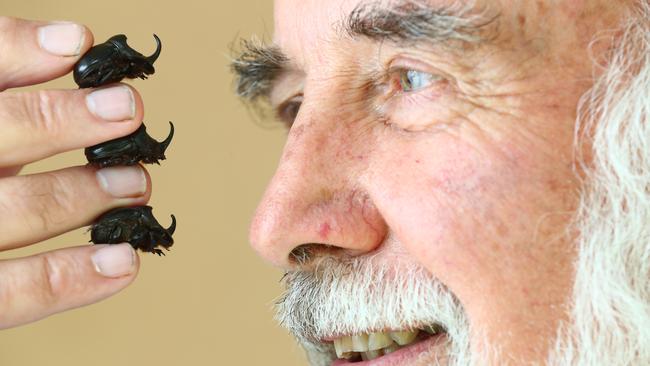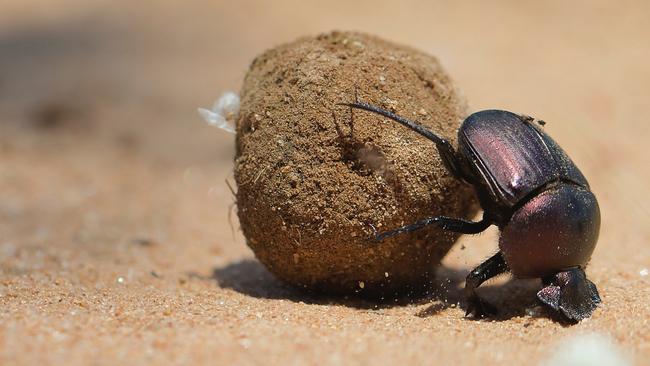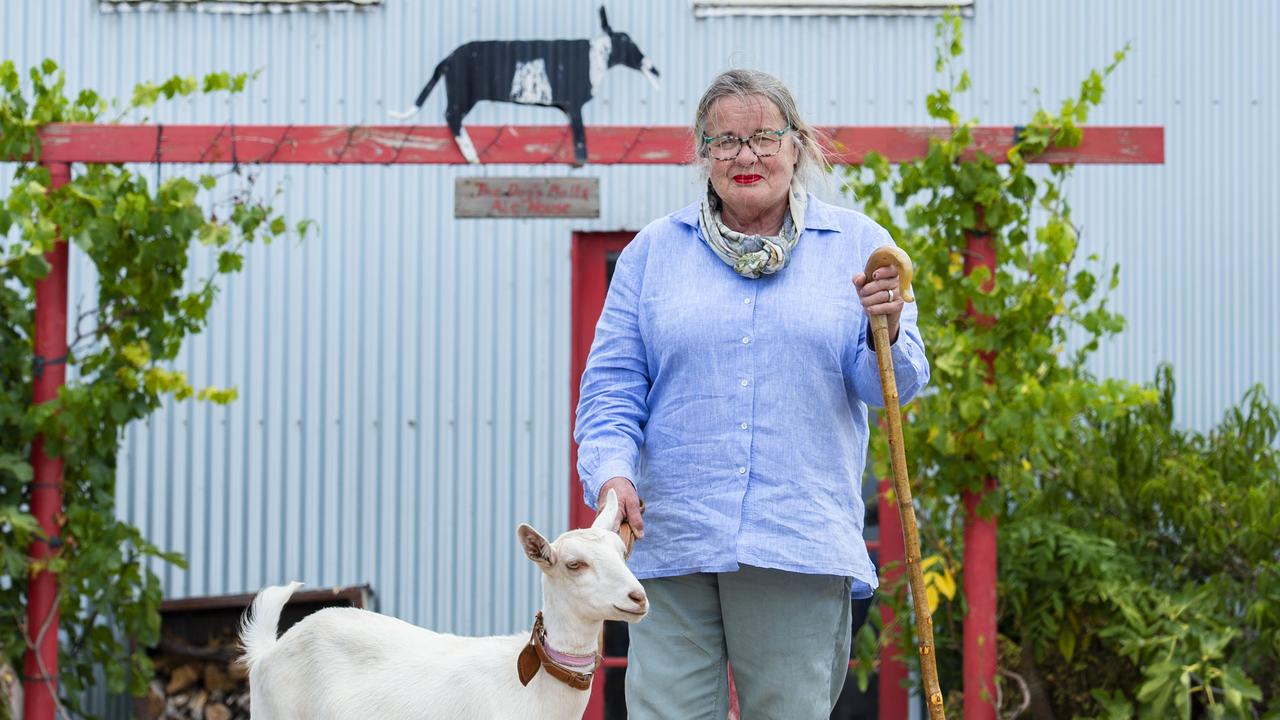The dung beetle is a small but mighty weapon for a farmer, says researcher Bernard Doube
NEVER pooh-pooh a dung beetle.

NEVER pooh-pooh a dung beetle. Sure, they may not be the most glamorous critters, feeding off animal manure as they do, but according to Dr Bernard Doube they are a pint-sized powerhouse, not fully appreciated by farmers.
“Dung beetles are one of the big missing components of conventional agriculture,” Bernard says.
“My aim is to get them to be an accepted part of a property’s management in the same way legumes are used to add nitrogen to soil.
“Just as one example, where they become abundant there can be a 20 per cent increase in pasture production. They also improve agricultural sustainability and massively improve the control of pests that breed in dung.”

The beetles are such a powerful force they earned Bernard an OAM in the Queen’s Birthday Honours last year, for services to agricultural science as a researcher, and they have been the focus of his work and research for 40 years or more.
The 72-year-old started working with the insects as a CSIRO researcher in the 1970s, then worked around the world with the species from South Africa to Egypt, and in 2003 set up his own business, Dung Beetle Solutions Australia.
Through DBSA he holds workshops and gives talks around the country, also collecting and distributing dung beetles to farmers.
Bernard also continues his research, most recently working with 10 partners including Meat and Livestock Australia, universities, departments of agriculture and the CSIRO to secure $23 million in Federal Government funding, due to kick in this year, which will see a variety of projects over the next five years including the importation of two new dung beetles.
Sitting on the balcony of his home, on two hectares at Bridgewater in the Adelaide Hills, Bernard says it is not only farmers who benefit from his work.
“I’m sitting here outside in the middle of summer and I’ve not seen a bushfly,” he says. “Do you remember having barbecues when you were young and there would be flies everywhere?
“One of the consequences of dung beetle research is that we don’t have the huge numbers of flies we once had.”
But the benefits are much greater than simple fly reduction.
“Dung beetles bury the dung and distribute nutrients into the dung through the soil, rather than leaving it sitting on paddocks, smothering pasture, polluting waterways and locking up the nutrients,” Bernard says.
One of the most unrecognised benefits is their role in reducing intestinal parasites in stock.
“One of the biggest problems facing the agricultural industry is intestinal worms, especially as chemical solutions for sheep and cattle farmers are becoming less and less effective as the worms become resistant to the available drenches.
“Most of the imported dung beetles don’t touch sheep dung, but in the last five years we’ve found the winter-active bison beetle does a terrific job on sheep manure.
“Once we’ve established populations of winter and spring-active beetles the amount of chemicals farmers use can be dramatically reduced.”
Research also shows the beetles can reduce the incidence of parasites that affect human gut health.
Because dung beetles make tunnels in the soil, this helps rainfall permeate rather than running off.
Dung burial means the run-off into waterways and reservoirs will contain lower levels of water-polluting nutrients.
There is evidence to show dung beetles help release phosphate, which is locked into soil compounds when spread by farmers.
“When farmers spread superphosphate, only a small portion, about 5 to 10 per cent, is available, with the rest locked in. Dung beetles are thought to be able to release this.”
Bernard says there are about 9000 species of dung beetles around the globe, of which Australia has about 480 native species, in addition to the 25 that have been introduced since the first was released by the CSIRO in the late 1960s.
The oldest beetle lives for about four years, the biggest is about 2cm long, the smallest is the size of a pinhead, while their breeding varies from a few offspring annually up to 80 eggs several times a year.
Because the creatures breed in different seasons, different soils and climates, Bernard says there are still gaps that need to be filled, hence the need for the $23 million funding.
Mark Higgins has a 380ha cattle farm in Mosquito Hill in South Australia and has worked with Bernard through MLA-funded projects to increase dung beetles on his property, saying he is now a convert.
“Dung beetles are nature’s engineers. They mine the dung and soil and rotate the nutrients,” Mark says.
“On our farm they have stopped the dung being washed off into waterways, reduce fly numbers, which has led to a reduction of diseases in the livestock, like pinkeye.
“To me the beetles are like a good Border Collie. They live to please and work for you.”
Bernard grew up in Adelaide, studied science at Adelaide University, followed by a PhD on kangaroo ticks, then started work at CSIRO aged 26, staying with the organisation for nearly 30 years, then becoming one of those “rare animals” to successfully branch out into a commercial business.
He has written several books including Biological Indicators of Soil Health and Dung Down Under and even now, in his 70s, he continues to head out in the field, targeting established, abundant populations in order to collect and distribute more around Australia.
“My wife is in her 70s too and we head out with shovels at the right time of the year when their tunnels are shallow and dig for them,” he says. “In one week last year, with the help of a mate, on a Western Australian farm we got 60,000.”
Bernard then either mails them to customers, or grows them out in field nurseries (galvanised tanks with a mesh lid).


